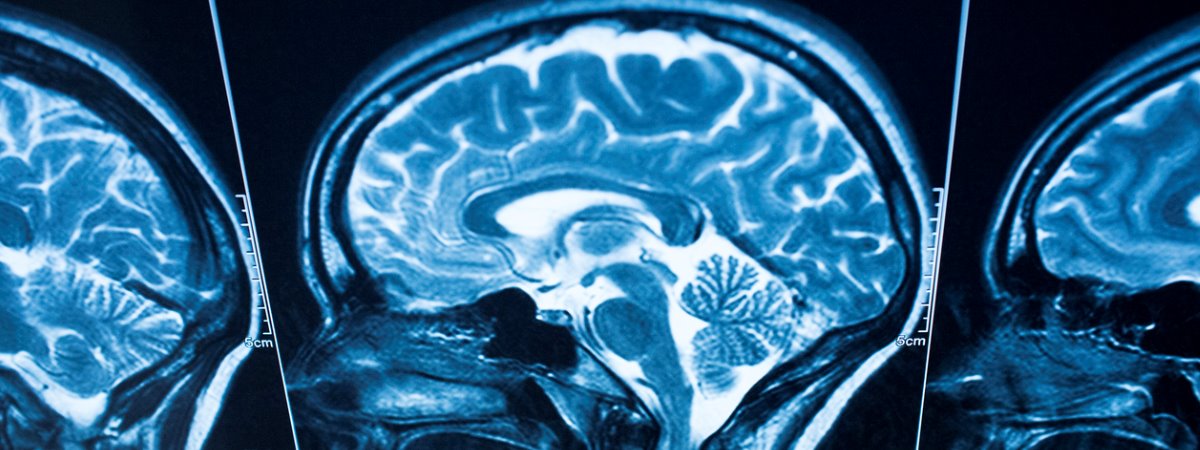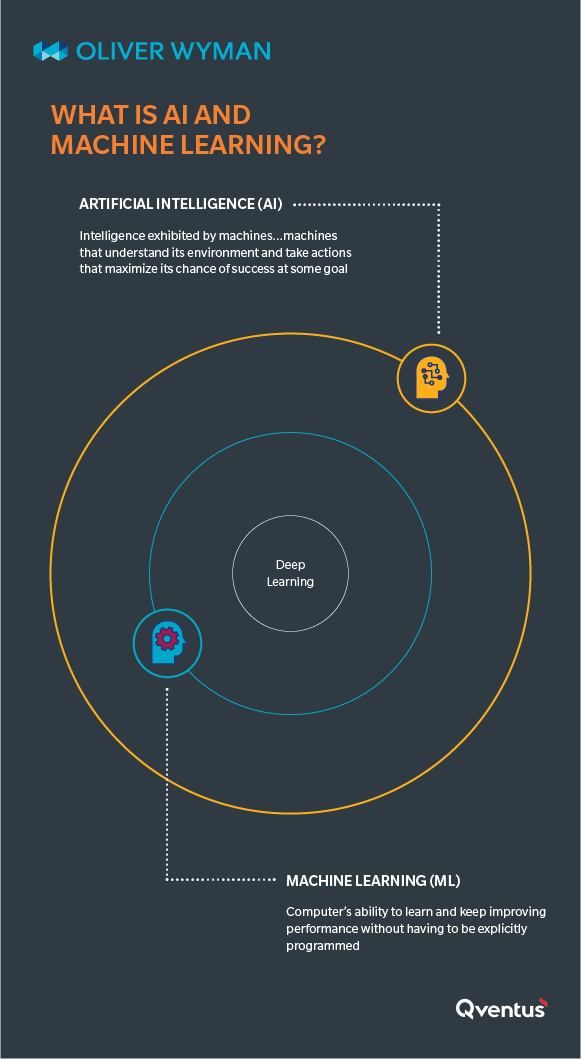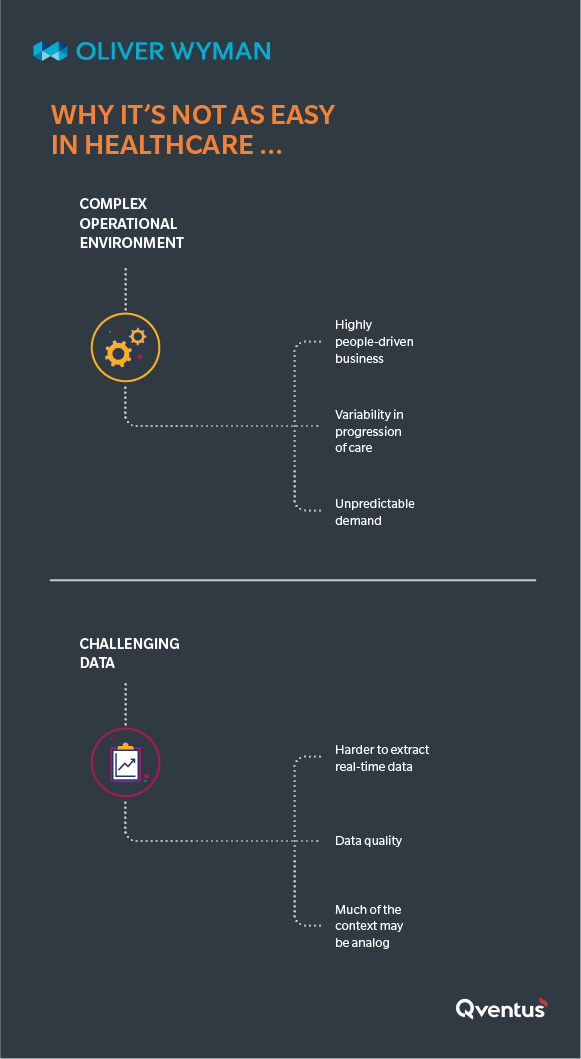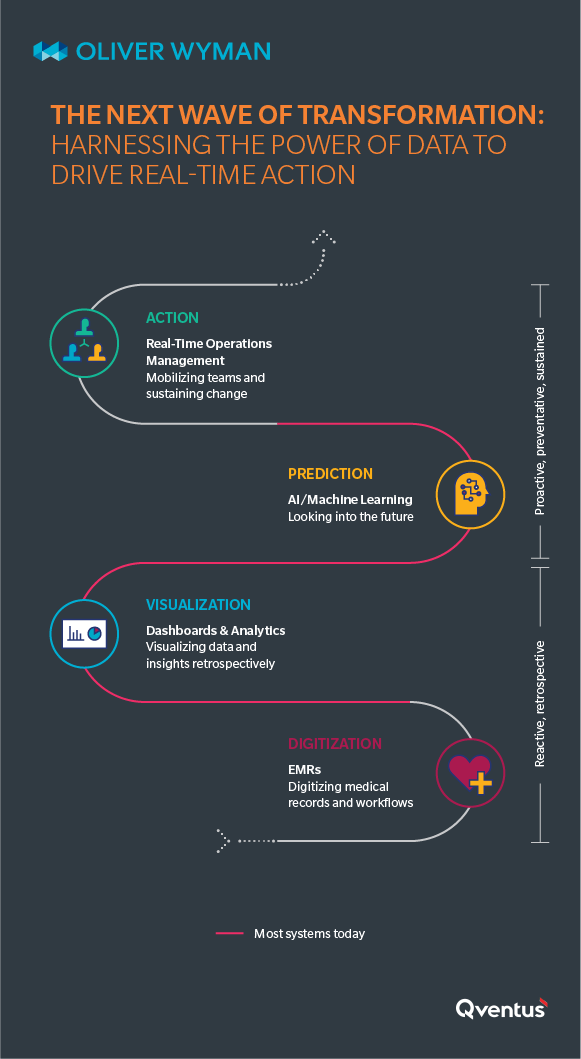In this episode of the Oliver Wyman Health Podcast, Sam Glick, Partner in the Health and Life Sciences division at Oliver Wyman, chats with Mudit Garg, Co-founder and Chief Executive Officer of Qventus, about healthcare waste, healthcare efficiency, and some of artificial intelligence and machine learning’s greatest opportunities for the healthcare industry.
For this episode and more, check out the Oliver Wyman Health Podcast page, featuring executive conversations on the business of transforming healthcare, available on iTunes, iHeartRadio, Soundcloud, Google Play Music, Stitcher, and Spotify. Or, just tell Alexa, "Play Oliver Wyman Health Podcast."
Mudit’s company, Qventus, believes inspiring true transformation can only occur with the frontline at the center. Their new concept – which they call a “System of Action” – uses artificial intelligence and machine learning to consider the countless decisions managers face, pinpoint key insights, and recommend the best way forward.
Growing up in India, Mudit’s first impression of the US healthcare system was one of groundbreaking medical advancements. He recalled his first exposure to a rural US hospital as a “truly eye-opening” experience.
“If you look at the US compared to other countries, we have world-class treatments, world-class equipment and therapies and world-class clinicians,” he said. Although he observed that reaching our full potential is “often eclipsed by a lack of highly reliable operations.” For example, despite the ability of that rural hospital to deliver top-notch care, “our current approach is not sustainable, relying heavily on the superhuman efforts made by the frontline.”
“I started to see our failure to provide world-class medicine came from our inability to create repeatable and reliable systems around the delivery of care,” he said. “Going deeper into it, I kept seeing compounded issues. A patient who didn’t get an MRI done on time stayed an extra day or two. A patient waiting for their labs might be held up for discharge. Things like this added up to massive amounts of waste in the system. If you look just at length of stay, according to a JAMA paper, about $140 billion is lost every year in the US healthcare system alone.”
Health system leaders Mudit’s spoken with estimate more than half of their patient visits are unscheduled, a problem that’s not well understood or analyzed by those outside of the healthcare industry. While there are tools available to help manage patient information, he’s seen firsthand how staff are too busy to sort through dashboards and extrapolate how to best adapt to the ever-changing environment in front of them. This often results in a frustrated patient experience, exhausted care teams, and operational inefficiencies.
Mudit’s work streamlining the myriad, daily decisions the best managers might anticipate – such as which MRI is most critical to get done today as opposed to tomorrow – aims to alleviate the cognitive load and put people at the center of care. But this management style to help people develop new habits, he said, often leads to resistance, especially if certain individuals are wary of organizational change.
“A machine learning approach utilizing rich contextual cues, not a rules-based approach, is effective in helping people develop new habits,” he explained.
“If I was driving, and every time I hit 66 miles per hour, a shrill alarm sounded in my car, I’d throw it out the window,” he said. “But if the alarm learned I usually stay within 5 or 6 miles of this speed, I’d slowly start to change my behavior.”
Mudit believes artificial intelligence and machine learning can only have an impact on improving operations if we have high confidence that once a problem is detected or anticipated, it has a high chance it will get acted upon. That happens either through automation in some cases or through habit formation in others.
Quietly improving operational reliability, he said, is one of machine learning’s greatest opportunities. "Discharging a patient – which from a patient’s perspective may seem like a simple process – takes 174 moving human parts,” he said.
“Moving from just predicting with technology to surfacing the best course of action, in real-time, is the transformation needed to foster meaningful change. Freeing up clinicians working in a highly complex environment to do the highest cognitive tasks is what artificial intelligence success looks like."







